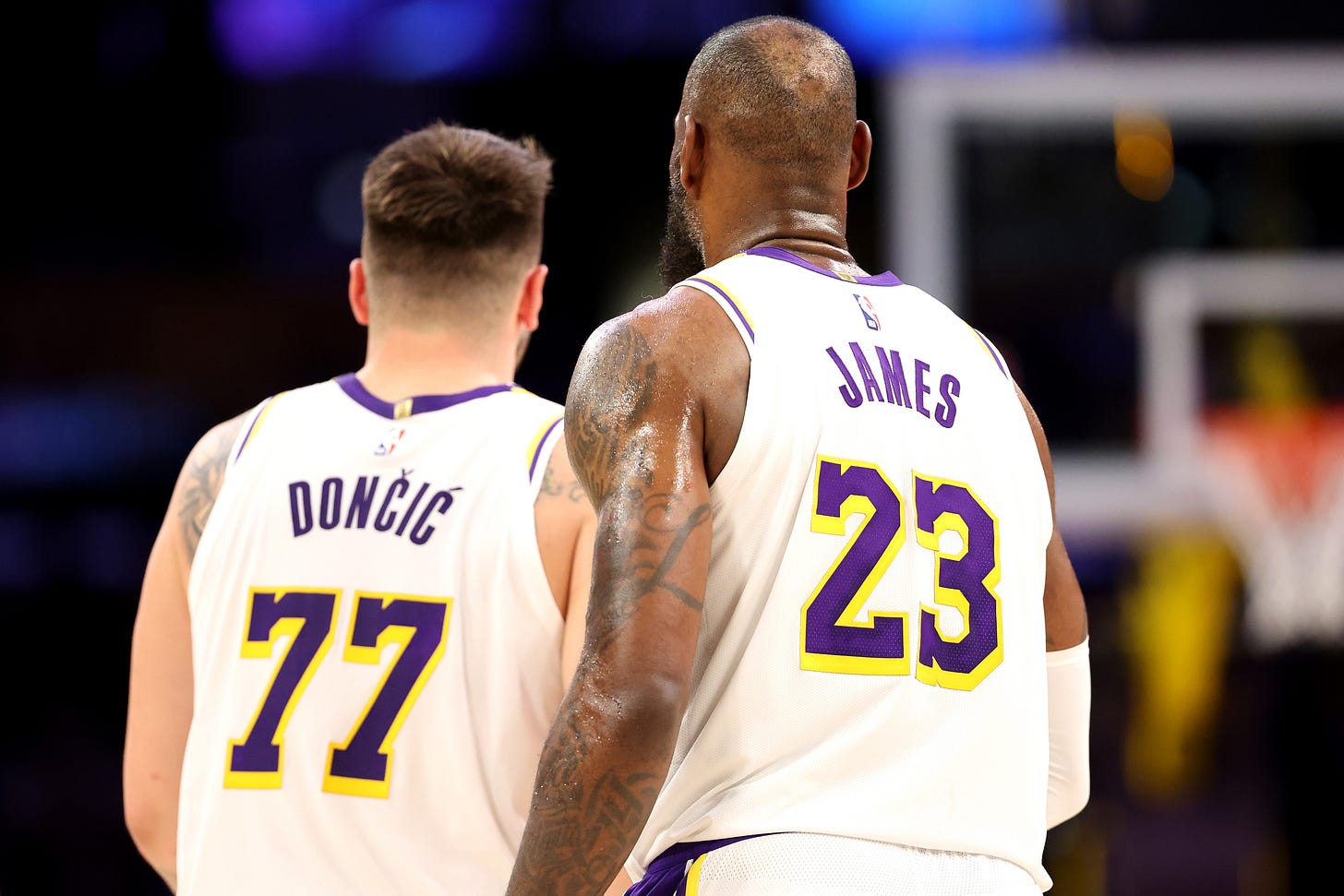Game 5 Preview: Desperate Times Call for Desperate Measures?
Down 3–1, backs against the wall, what can the Lakers do to make a comeback?
The Los Angeles Lakers have put themselves in a giant hole.
Tonight will be their first must-win, potentially season-ending game, and even if they survive, they’ll have to do it two more times. The only good news is that two of the next three games would be at home.
It doesn’t make much sense to talk about desperation going into this game—J.J. Redick and his team already treated the last one like Game 7, playing the same five players the entire second half without a single substitution and leaving both Luka Dončić and LeBron James on the floor for 46 minutes. Redick called his team 'on edge,' and I think that’s a spot-on description of the situation.
Before I break down what’s at play going into Game 5, a quick programming note: I’ll keep doing Lakers playoff breakdowns as long as they’re still in the mix. If—or when—they’re eliminated, I’ll pivot to offseason content: big-picture playoff observations, deep dives into the Lakers and Mavericks roster-building options, Dončić’s offseason, draft analysis, free agency, and other looming questions.
Today’s highlights:
Pivot back to hustle and a longer rotation
How can the Lakers replicate their Game 4 third quarter? (🎞️VIDEO)
Do the Lakers need more Dončić iso scoring to unlock their ball movement?
How can the Lakers not replicate their fourth quarters?
1-Pivot back to hustle and a longer rotation
Two themes have defined the Lakers in this series so far: Redick radically shrinking his rotation, and repeated fourth-quarter offensive collapses.
Redick has downplayed any direct link between the two, but even if the late-game offensive struggles aren't solely the result of tired legs, there are still plenty of alarming signs—especially on defense, where fatigue seems to be causing them to fall a step behind. As much as the fourth-quarter offense has been discussed, the defensive trends are even more concerning. The Wolves’ high offensive rebound rate, rim frequency, and corner three frequency—combined with a high foul rate by the Lakers in Game 4—paint a clear picture of a defense that’s constantly in rotation and trying to catch up, rather than dictating terms like it did in Game 2. Over the four games, the Lakers have allowed 120.8 points per 100 possessions, the second-worst mark among all 16 playoff teams (only the disappointing Heat have been worse).
Redick leaned on offense by limiting minutes for his high-energy bench players, but the Lakers haven’t scored at the elite level needed to overcome the 10+ shot deficit the Wolves have created by dominating the glass and forcing turnovers in the last two games. Back at Crypto.com Arena and feeding off the home crowd, maybe it’s time to find a way to get Gabe Vincent, Jarred Vanderbilt, and Jordan Goodwin back into the series. Those three, along with Dorian Finney-Smith, have combined for just four steals across four games. The Lakers need their hustle and defensive edge to slow down a Wolves team that’s been scoring at will.
Maybe Redick could start one of those three over Jaxson Hayes, who looks overwhelmed by the speed and physicality of this series, in order to provide more on-ball pressure and resistance. Maybe they stagger Dončić and Austin Reaves’ minutes more—to get an additional defender on the floor and give Reaves more on-ball reps when Dončić sits. Maybe Dalton Knecht can fill a few minutes. Regardless of the fix, Redick needs to find a way to get fresher legs into the mix, because it’s clear that five players alone can’t match the physicality of the bigger, deeper Wolves.
2-How can the Lakers replicate their Game 4 third quarter? (🎞️VIDEO)
The Lakers outscored the Wolves by 13 in the third quarter of Game 4, with their 36 points marking their highest-scoring quarter of the series. Heading into Game 5, Dončić pointed to that stretch as the template for playing their 'best basketball.
So what actually happened in that quarter?
Some pointed to increased passing and ball movement as the reason, but I think the key came earlier. Dončić, in particular, was scoring efficiently against both the Wolves’ switching and drop coverages, which forced Chris Finch to shift to a more aggressive blitzing scheme. That third quarter featured the highest rate of blitzes in any period of the series so far. With Dončić drawing two defenders, the Lakers created several quality looks by making quick decisions and moving the ball effectively in 4-on-3 situations.
3-Do the Lakers need more Dončić iso scoring to unlock their ball movement?
Keep reading with a 7-day free trial
Subscribe to digginbasketball to keep reading this post and get 7 days of free access to the full post archives.





